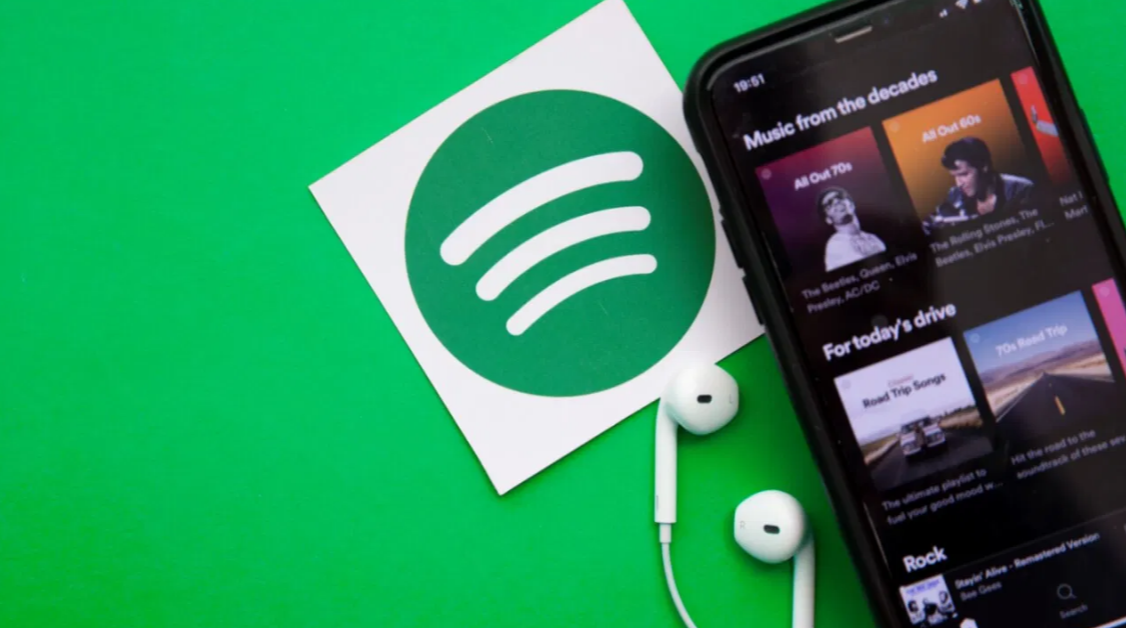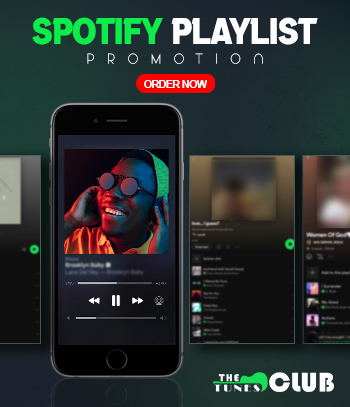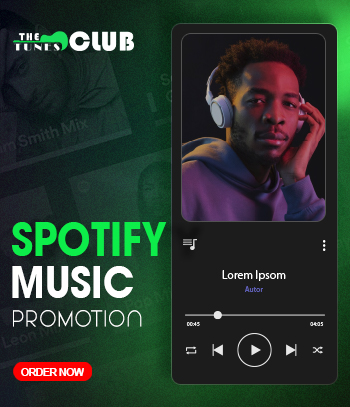A Complete Guide to Spotify Playlists: Types, Benefits, and How Artists Can Get Featured
04 October 2025
Spotify playlists are one of the most powerful ways you can make your music get more attention. Read along to know its types and how you can get featured.

A Spotify Playlist is a curated set of songs grouped by genre, mood, artist, or theme. It can be personal, collaborative, editorial, or even algorithm-based. Playlists on Spotify act as both a categorization tool and a social feature on the platform. They help position artists within specific genres or scenes while giving users a way to discover new artists and share music. Fans also connect more naturally by exchanging playlists and their favorite tracks with one another.
So, let’s move ahead and have a thorough discussion on Spotify playlists. Here, you will know why Spotify playlists are important for artists to get into, how many types of playlists there are, and what steps artists can take to be featured.
Spotify playlists
Playlists are now a key part of music releases and marketing. In 2020, about 30% of all Spotify plays came from editorial playlists. Between 2020 and 2021, more than 150,000 artists got playlist placements. By 2025, Spotify users had created over 8 billion playlists, proving how central they are to music listening today. Understanding how to use different types of playlists can make a huge difference for artists. They can help boost streams and grow a loyal fan community.
Different types of Spotify playlists -
- Editorial playlists
Spotify’s editorial playlists are some of the most powerful tools if you want your music to be discovered on the platform. These are curated by Spotify’s own team of music experts. These are handpicked collections built around trends, moods, genres, or specific themes. Editorial playlists also often have massive followings, which can even reach millions sometimes. Getting placed on one of the editorial playlists can change an artist’s reach on the platform as they boost both streams and visibility overnight. However, with so many artists aiming for these coveted spots, landing on an editorial playlist is also the most competitive.
The good news is that Spotify gives every artist a chance to pitch. You can submit any upcoming release to the editorial team through Spotify for Artists for playlist consideration. The only requirement is to submit at least seven days before your release date. This gives curators enough time to review your track and assess where it fits.
When pitching, it is always smart to provide as much detail as possible, like the mood, genre, instruments, or the story behind your song. The more information you offer, the better the editors can understand your track’s vibe. Even if you do not land placement right away, pitching consistently builds long-term visibility.
- Algorithmic playlists
Algorithmic playlists like Discover Weekly and Release Radar are some of the most effective ways for artists to find new music on Spotify. Unlike editorial playlists, these are generated automatically by Spotify’s algorithm. So, these playlists are tailored to each listener’s unique listening preferences and interests. Discover Weekly updates every Monday with songs Spotify thinks you will love. On the other hand, Release Radar refreshes every Friday with new tracks from artists you already follow, along with a few related recommendations.
For artists, this means you do not need to rely on curators or pitching. Your fans themselves help trigger the algorithm. The more followers you have, the greater your chances of appearing on personalized playlists like these. Every time someone follows you, your new music is likely to land in their Release Radar. In addition to this, it saves playlist adds and repeat streams help strengthen your algorithmic footprint. To say it simply, if you encourage fans to follow and engage with your music, it directly boosts your playlist chances.
- User-generated playlists
Fan-made or user-generated playlists are exactly what they sound like. These are playlists that are created by fans by featuring their favorite tracks. Any Spotify user can make one, and they can choose to keep it private or share it publicly. These playlists can be personal collections. Additionally, these can have a big impact on music exposure and discovery. When fans add your song to their playlists, it signals to Spotify that your music resonates with listeners. This activity helps the algorithm understand your audience and can influence which tracks appear on algorithmic playlists like Discover Weekly and Release Radar. In other words, fan engagement directly affects your music’s reach and visibility.
Encouraging fans to create and share playlists featuring your music is a smart strategy. It not only builds loyalty but also helps your tracks reach new listeners who might otherwise never hear your songs. Every fan-made playlist is a small boost to your Spotify presence.
- Artist playlists
Artist playlists are a fun way to showcase music directly on your official Spotify Artist page. These playlists let you highlight your one tracks or songs from other artists you admire. To create one, you need to make a playlist on your personal account. You can also find a playlist that you love on the platform and feature it as an Artist Pick in your Spotify for Artists dashboard. It is an easy way to give fans a curated look at your style and influences.
Artist playlists can also help train the Spotify algorithm. Put together a playlist with your best songs, along with tracks from other artists who inspire you or share a similar vibe. When you feature this playlist on your profile, the algorithm starts associating your music with these comparable artists. This can improve your chances of being recommended to new listeners and appearing in algorithmic playlists. Furthermore, it helps you grow your reach and discoverability on the platform.
- Algatorial playlists
Algatorial playlists are one of Spotify’s most exciting features. These playlists combine the best of both worlds - editorial curation and algorithmic recommendations. Firstly, Spotify’s team of curators handpicks a wide pool of songs for a playlist. Then, the platform’s algorithm customizes the final version to fit each listener’s tastes. This makes the experience feel more personal and engaging. For artists, landing on these playlists can be a huge boost since they often reach listeners who are already open to discovering new music. So, how do you increase your chances of being included? Start by growing your visibility and engagement on Spotify. You can also encourage your fans to add your songs to their own playlists and share them on social platforms. Strong engagement plus proactive promotion increases your chances of getting noticed in algatorial playlists.
Benefits of Spotify playlists -
Playlists are one of the most powerful tools on the biggest music streaming platform on the internet. They help your music get discovered and boost fan engagement. This increases your overall visibility. Using playlists strategically can make a big difference in how your songs reach new listeners. Here are some of the important advantages -
- Exposure: Being featured on a playlist puts your tracks directly in front of followers who are already exploring music in that style. It is a simple way to get discovered by new fans who might not have found you otherwise.
- Fan engagement: Playlists let your music blend with tracks from artists listeners already love. This makes it easier for new fans to connect with your sound and start following you.
- Audience insights: Playlists can help you reach new listener groups. You can use Spotify for Artists to see how your music performs and understand your audience better.
- Revenue: More streams mean higher royalties from the platform. Every time your song is played in a playlist, it contributes to your earnings.
- Inspiration: Exploring playlists with other artists can give you fresh ideas. It can also introduce you to new genres and spark creativity for your next release.
Ways to get featured on Spotify playlists -
To get your music on the official Spotify playlists like Editorials or Release Radar, start by setting up a Spotify for Artists account. From there, you can pitch any upcoming release directly to Spotify’s editorial team through your dashboard. Just make sure you submit your pitch at least seven days before your release date. After that, follow some important steps to boost your chances of being featured and getting your tracks in front of a wider audience base.
Optimize Spotify profile:
Before pitching your music to Spotify playlists, make sure that your artist profile is fully optimized. Editors are more likely to feature artists who take their profiles seriously. So, put your best foot forward. Upload a high-quality profile image and a visually appealing banner that represents your brand. Write a compelling bio that tells your story and connects with the listeners. You can also add canvas visuals to your tracks, set an Artist Pick to highlight an important song or playlist, and keep your profile active. At the same time, encourage your fans to follow your profile, as a follower count and engagement can influence playlist decisions. An optimized, complete profile on Spotify attracts editors and gives listeners a reason to stay. This intrigues fans to explore your music and share it with others. So, taking the time to optimize your profile pays off in discoverability and credibility.
Share the story behind your song:
When you are pitching your music to Spotify playlists, do not just submit the track; tell the story behind it. Explain how you wrote the song and the emotions you wanted to capture through it. You can also add the experiences that might have inspired the song. Sharing the moods and meaning gives editors valuable context and helps them understand where your song fits best. A well-crafted story can make your track stand out. It shows that the song is a complete experience for the listeners. Bringing your song to life through words increases the chances of catching an editor’s attention and landing on the right playlist.
Grow your fan community:
Spotify editors pay attention to more than just your streams on the platform. They notice how engaged your fans are outside Spotify. Social media presence and press mentions, along with community activity, all play a big role in building buzz around your music. Artists who make it onto editorial playlists often have strong and active communities that support them across multiple channels. Interacting with fans online, touring, doing live shows, and creating stories around your music help amplify your reach on the platform. This is how you can show that you have a loyal and engaged audience. In return, it helps in increasing your chances of catching editors’ attention and making your music stand out for playlist consideration.
Create a promotion strategy:
Spotify editors want to see that you have a strong plan for promoting your music. Simply submitting a track to them is not enough anymore; you need to explain how you will get the word out. Are you touring soon? Are you planning press coverage, interviews, or social media campaigns? Will you run ads or engage with your fans in unique ways? Editorial playlist spots are highly competitive, so showing that you have a strategy proves that your song can gain traction once it is featured on the playlists. This is how you demonstrate your plan to capitalize on a playlist placement. This way, you make it easier for Spotify to see the potential impact of adding your track. A proper promotion plan can make the difference between getting noticed and being passed over.
Apart from Spotify’s editorial team, multiple independent playlist curators can contact and secure your feature. Moreover, there are also Spotify promotion services that give authentic increased streams!

